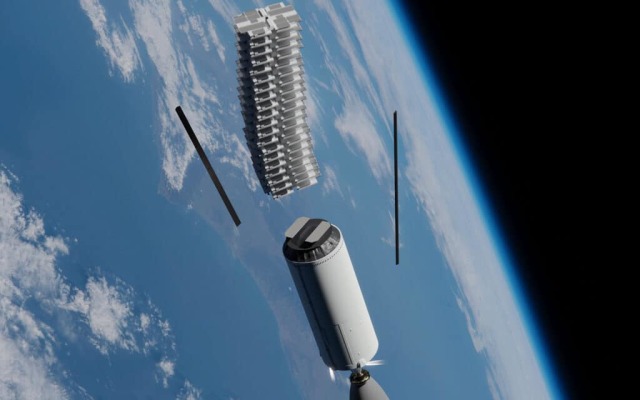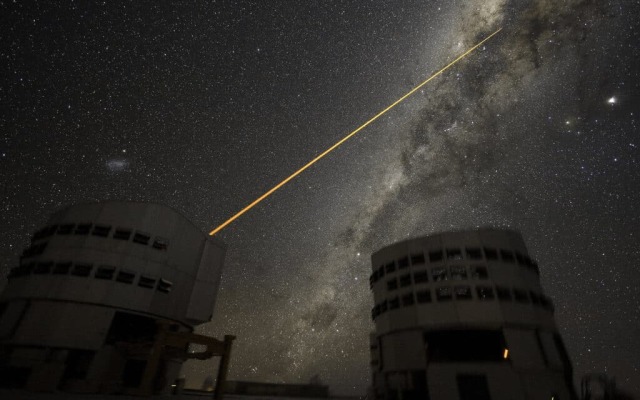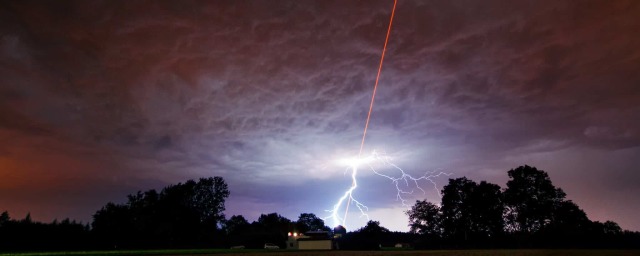While SpaceX fans are enthusiastically following the company's achievements, astronomers are sadly watching how their work becomes more difficult with each launch of Starlink satellites. Progress does not pass without sacrifice. Therefore, various scientific associations are looking for ways to reduce the negative impact of many new man-made objects in near-Earth space on the quality of data received by telescopes. Some solutions look extreme from the outside — for example, now you can not turn off lasers to adjust adaptive optics if there is a Starlink satellite in the field of view. And that's tens of watts of radiation!
Many modern optical telescopes (since about the mid-2010s), as well as upgraded systems of earlier construction, rely on adaptive optics. It allows you to correct the disturbances that the earth's atmosphere introduces into the flow of light. This radically increases the resolution of the instruments, but at the same time requires the most complex technical solutions. And not only special deformable mirrors.
To determine how turbulent air flows in the atmosphere change the wavefront, we need a light source with unchanged and well-known characteristics. For example, a bright star — then, by analyzing its radiation flux, you can determine the distortion parameters and make adjustments. But there are few suitable stars, so the viewing sectors for telescopes using such a landmark are limited. There is a solution — not to look for natural bright stars, but to create them manually. This is called a " laser reference star ".
The principle is simple: a laser shines in the "field of view" of the telescope, which excites the atoms scattered in the upper layers of the atmosphere and makes them glow brightly. The wavelength of the radiation is selected based on the required height of the appearance of such a reference star. Most modern systems use yellow lasers (589.2 nanometers) that excite sodium atoms, of which there are relatively many at an altitude of 80 to 105 kilometers (mesosphere) — much higher than the most turbulent layers. The power of the emitters is measured in tens of watts, so they are necessarily automatically turned off if the beam can meet an airplane or satellite.
In the case of aviation, everything is simple: most aircraft are equipped with ADS-B responders. Automation just has to track traffic through open channels. Moreover, the observatories are located in regions where air traffic is not too busy anyway. Satellites are a bit more complicated: their orbital parameters are constantly changing, and ephemerides need to be updated regularly. The database for monitoring objects in near-Earth space that are better not to be illuminated with a laser is called Laser ClearingHouse (LCH). It is used not only by astronomers, but also by the military: they also sometimes shoot powerful lasers somewhere there. And if a satellite that is not in the catalog turns out to be in the path of the beam, then this is his problem.

What exactly the second-generation Starlink satellites look like is not yet completely clear. Nominally, their first launch took place in December 2022, but the devices under the fairing, judging by the official online broadcast, did not visually differ from generation 1.5. Initially, it was assumed that a full-scale update of the "hardware" of the grouping would occur together with the commissioning of the Starship system. Because the capabilities of the Falcon 9 are simply not enough to launch larger and heavier satellites in large quantities. In any case, for tightly assembled devices, even an extra 20-40 watts of energy delivered by a laser can be a critical load on the thermoregulation system. In the photo: visualization of the breeding of the Starlink satellites of generations 1 and 1.5 from the second stage of the launch vehicle after launching into the reference orbitImage Source: NASASpaceflight, Mack Crawford
Therefore, it is in the interests of their owners to put satellites in LCH. But contrary to this logic, SpaceX will now remove all Starlink grouping devices from there. This is part of gov/news/statement-nsf-astronomy-coordination-agreement" target="_blank" rel="nofollow">agreements between Elon Musk's space company and the US National Science Foundation (NSF). Now astronomers from all over the world will have the opportunity not to interrupt observations several times a night. A powerful help and an important precedent for other companies that are going to or are already deploying large-scale "constellations" of satellites in near-Earth orbit.
In addition to such permission to "shoot" at their devices with a laser, SpaceX has assumed several more obligations. For example, the satellites will turn off the transmission of the radio signal when they are over the areas where the radio telescopes are located. In addition, the second generation of Starlink devices, despite the increased size, will retain a low albedo (reflectivity). The goal is for the satellites to have an apparent magnitude greater than 7 (the smaller, the brighter), that is, they should not be visible to the naked eye. Given the altitude of the orbit, this will give astronomers at least three hours of continuous observations per night.
Recall that these commitments are almost completely in line with the wishes of the International Astronomical Union (IAU) and the International Dark Sky Association (IDA). Naked Science wrote in April 2021 about how these organizations are trying to encourage companies that own satellite groupings to take into account the interests of scientists. That is, SpaceX cooperates with astronomical organizations and fulfills their requests. However, as reported by the SpaceNews portal, IDA still sued the US Federal Communications Commission (FCC), which partially approved the launch of the second generation of Starlink satellites.
The claim of the International Dark Sky Association to the regulator is that the agency did not conduct an environmental assessment of the updated devices. Moreover, a very loose interpretation of the laws is used, equating near-Earth space with the terrestrial environment. In other words, the prospects of the lawsuit are extremely vague.

Curiously, the agreement between SpaceX and all astronomers of the world represented by NSF can only partially be called forced. There is no legal basis for the requirements to reduce the visibility of satellites and it will not be developed soon. But acting as an arbitrator, the FCC put forward a condition for Musk's company to approve the application for registration of satellites — to start negotiations with scientists and reach some agreements. It turns out that SpaceX has gone beyond what is necessary right now and is creating a precedent that will affect all industry players in the future. In the photo: two of the four telescopes of the Very Large Telescope Observatory (VLT, the diameter of the mirrors is 8.2 meters) in the Atacama Desert (Chile) are observing the center of our galaxyImage source: ESO, Yuri Beletsky
Earlier, another satellite communications provider tried to delay the launch of the first generation of Starlink and appealed to the fact that an environmental assessment of their impact on the atmosphere was not carried out. The court dismissed the claim as literally far-fetched. And the new lawsuit will be based on an even more shaky foundation.
The FCC approval was published last December, the regulator allowed SpaceX to put 7,500 second-generation vehicles into orbit out of almost 30 thousand planned. With the rest, Elon Musk's company was asked to wait — they say, we need to think about other companies that also need radio frequency spectra and a safe space between orbits.
In general, this approach does not spoil the plans for the deployment of Starlink in any way, since they change regularly anyway. The equipment is being improved based on the results of operation, adjustments are being made to the concept — for example, SpaceX refused an additional "layer" of devices operating in the V-band, the existing platforms are coping.

